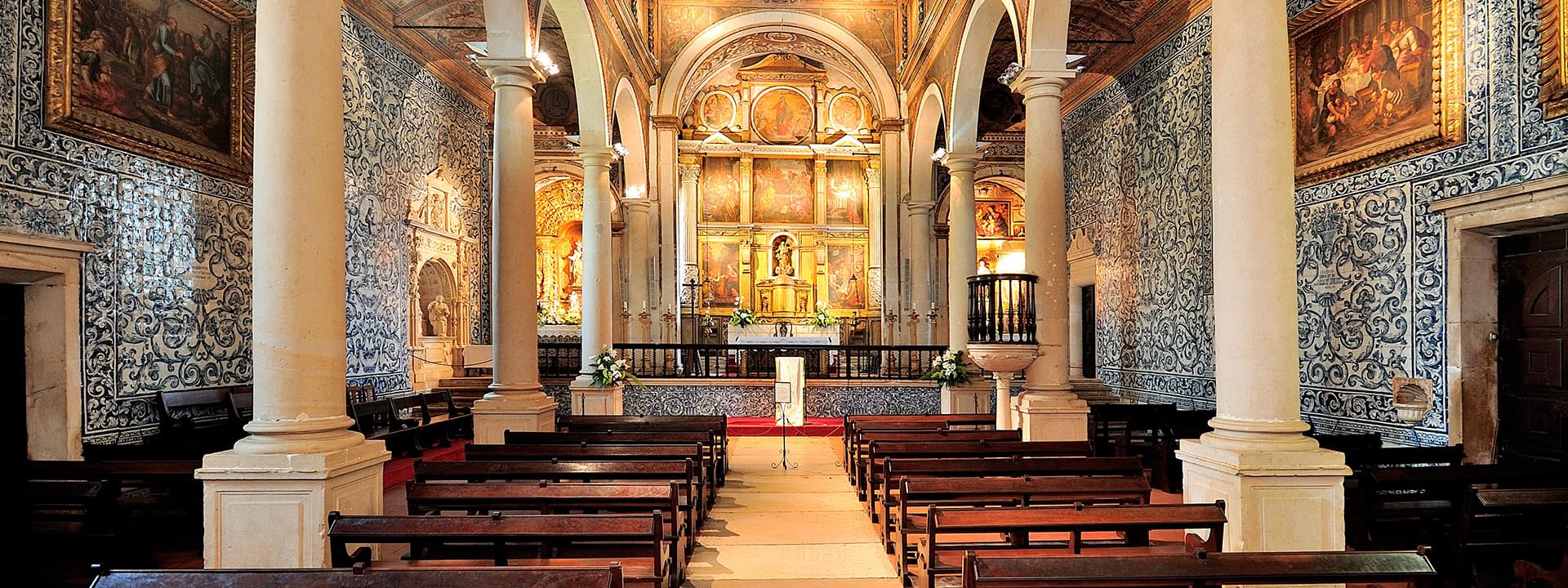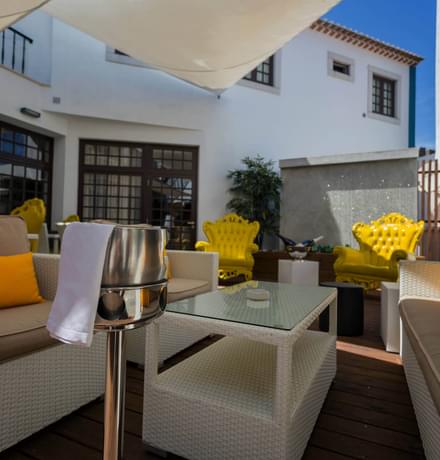Mosque in the Muslim period and sacred by D. Afonso Henriques shortly after the conquest of the town in 1148. If the exact date of the foundation is not known, it is a fact that the priory of the new church was given to Saint Teotónio, companion of D. Afonso Henriques, a great figure of the Church and prior to the powerful Monastery of Santa Cruz de Coimbra, who had the patronage of the Church of Santa Maria until D. João III donated it to his wife, Queen D. Catarina of Austria.
In the interior, the tomb of D. João de Noronha, Moço, and his wife Isabel de Sousa, classified as a National Monument, stands out, as it is one of the most beautiful examples of the Portuguese Renaissance tumult. The decoration of the naves of Santa Maria’s Church is one of the most outstanding works of all national tiles, it features the most monumental tile compositions based on the brutish and decorative motifs of the ceilings.
In the painting, the main highlight goes to the altarpiece of Saint Catherine of Alexandria, painted by Josefa d’Óbidos, possibly being the only work executed by the painter that still maintains in its original location.
Also noteworthy is the beautiful 17th century pipe organ in the high choir.









